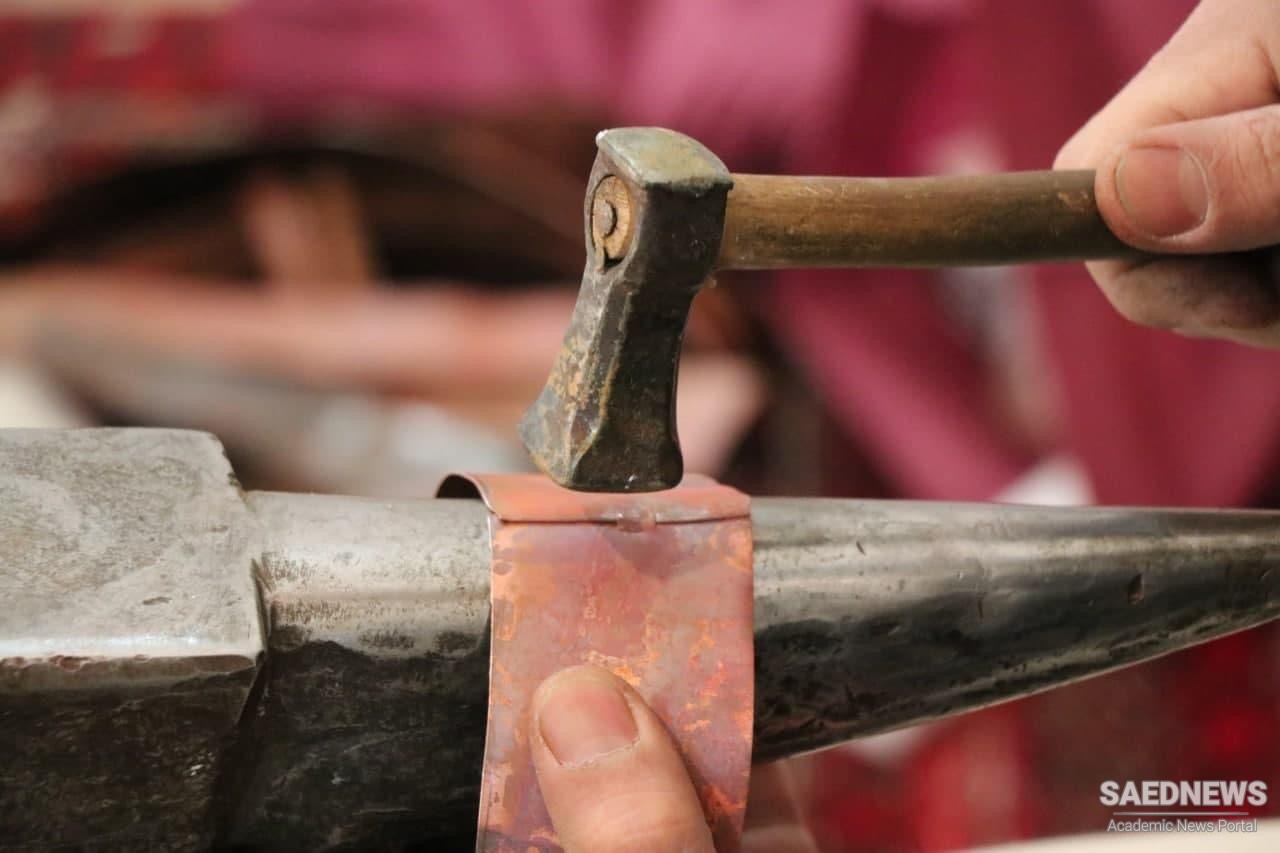According to Dehkhoda word encyclopedia “Chalangar” is a person who makes or repairs iron keys, locks, fasteners, shields, chains, pliers, nails and other objects, and “Chilangar” and “Chalingar” are two other names for it. The Chalingar people usually work alone and have no apprentice. In the past, the artists of this craft made scythes, hammers, horseshoes, nails, horse and cow bindles in the cities and villages. Today since both agriculture and animal husbandry has become automatic or semi-automatic, the blacksmiths now make applicable- decorative objects such as vase bases, dividers, window protectors and etc. The basics of blacksmithing is like making a knife and is done by heating the metal in kiln, blowing, forging and making attachments to make the final product.
“Zomud” is a part of Chalangari that involves making door and window tools. In other words, Zomudgari is the craft of making hinges and joints for old and traditional doors and windows. Most probably old craftsmen of Zomudgari were very skillful painters and sketchers because the word “Zomud” means to paint, decorate and decorative parts of the building. In the past, doors and windows were different from their contemporary counterparts and metallic locks made by the Chalangars were attached to wooden windows. One of these locks is known as “Kubeh”. Kubeh is an object that is attached on a metallic plate on the door of the house. A visitor could simply knock the Kubeh on “Golmikh” to make his presence known to the owner. The Kubehs were first made of iron and then brass. Some of the old Kubeh remaining from past belong to three hundred and fifty years ago. But using brass Kubeh began only fifty years ago. The oldest brass Kubeh can be found on the entrance door of Ebrahim Khan School in Kerman or Agha Khan School in Kashan.


 Souvenir of the North: Guilan Pottery
Souvenir of the North: Guilan Pottery














































